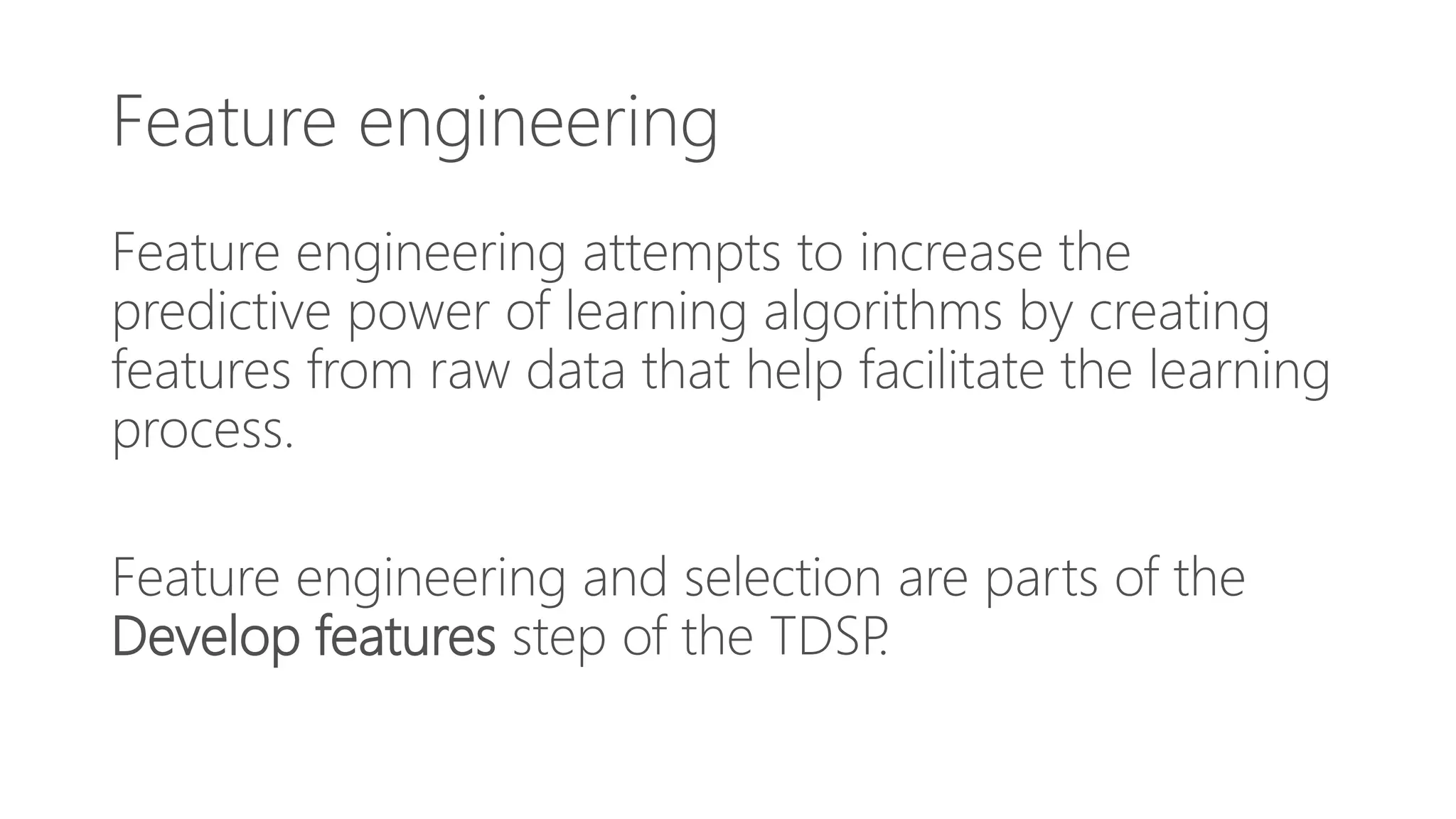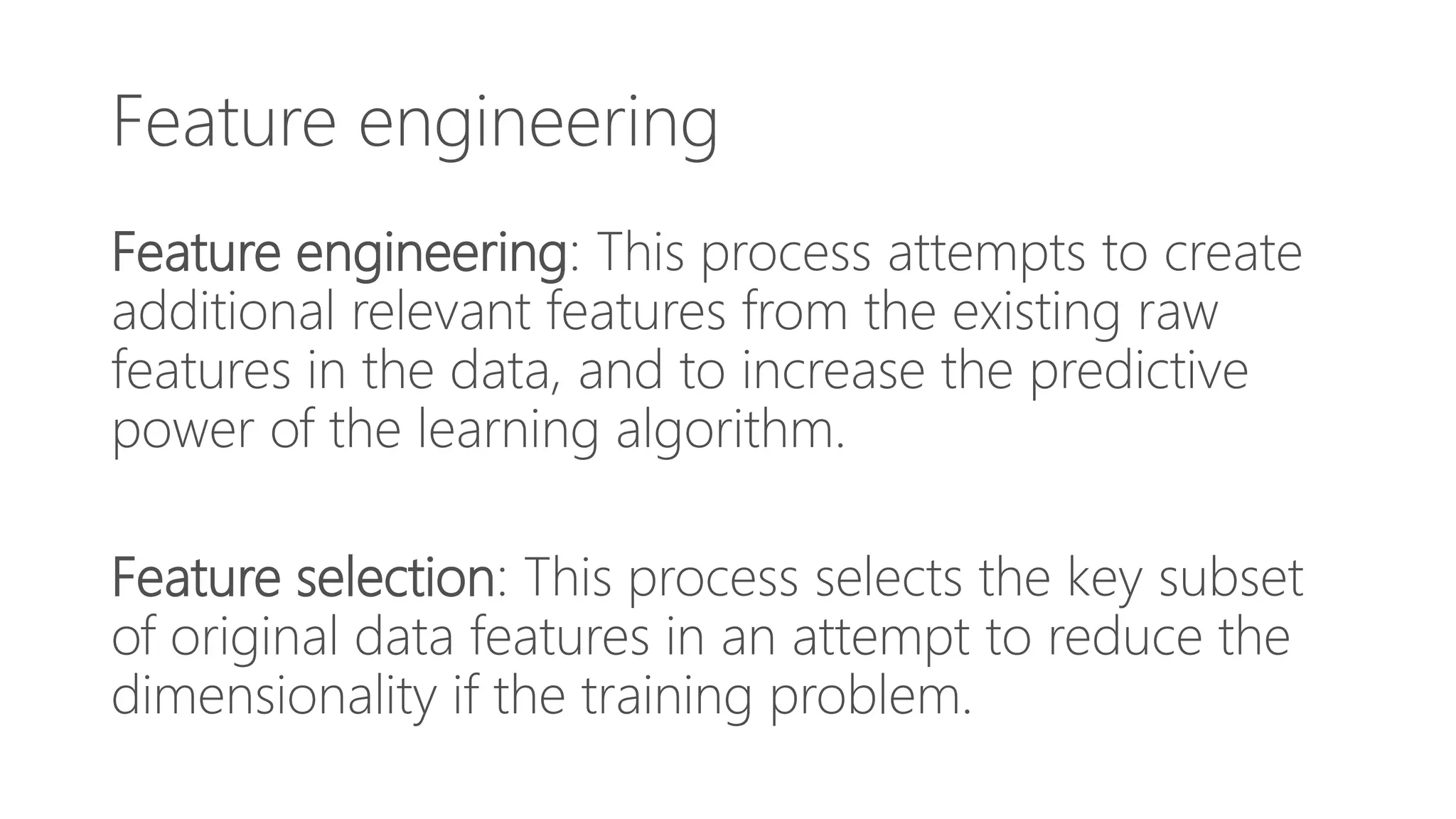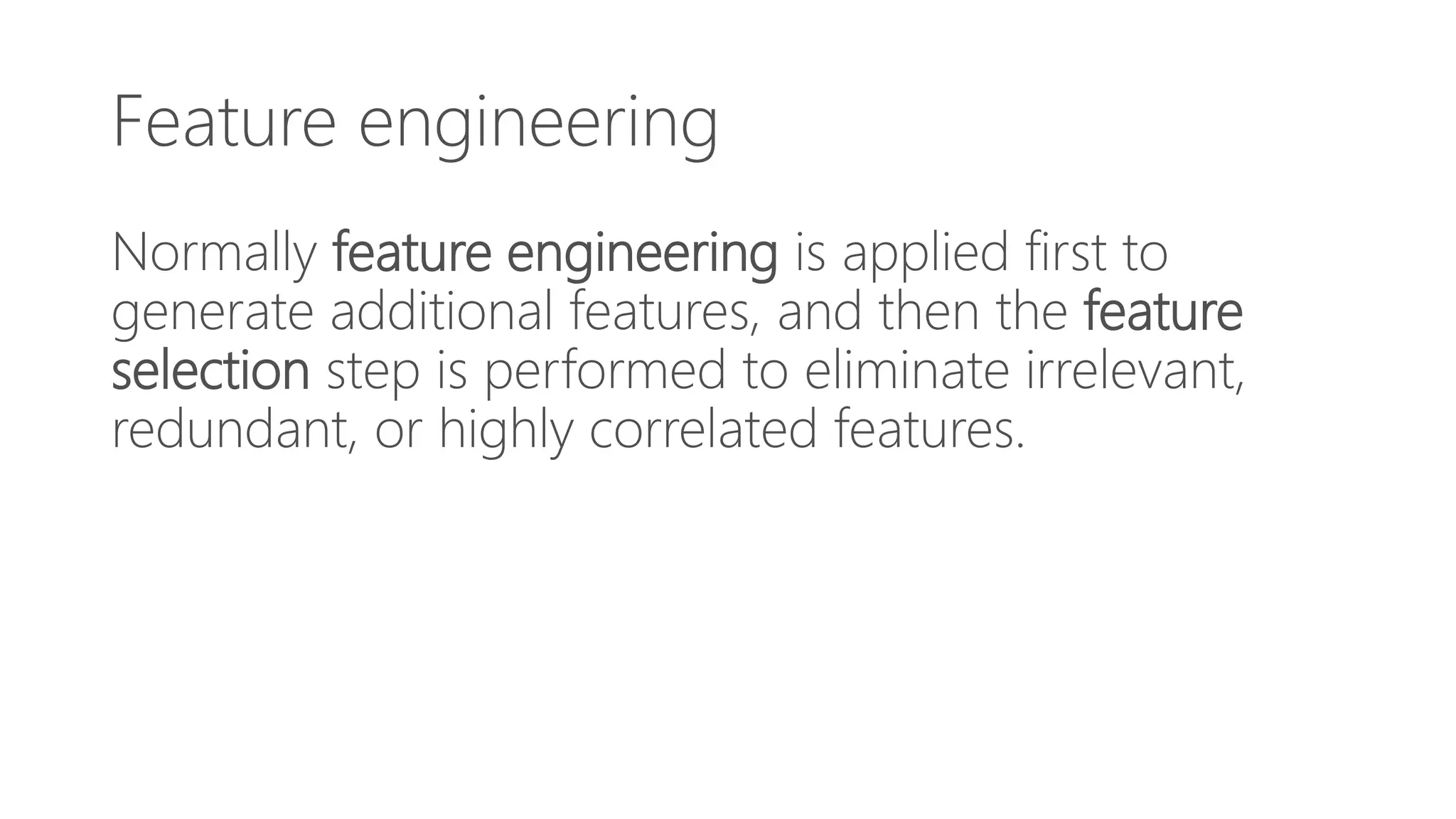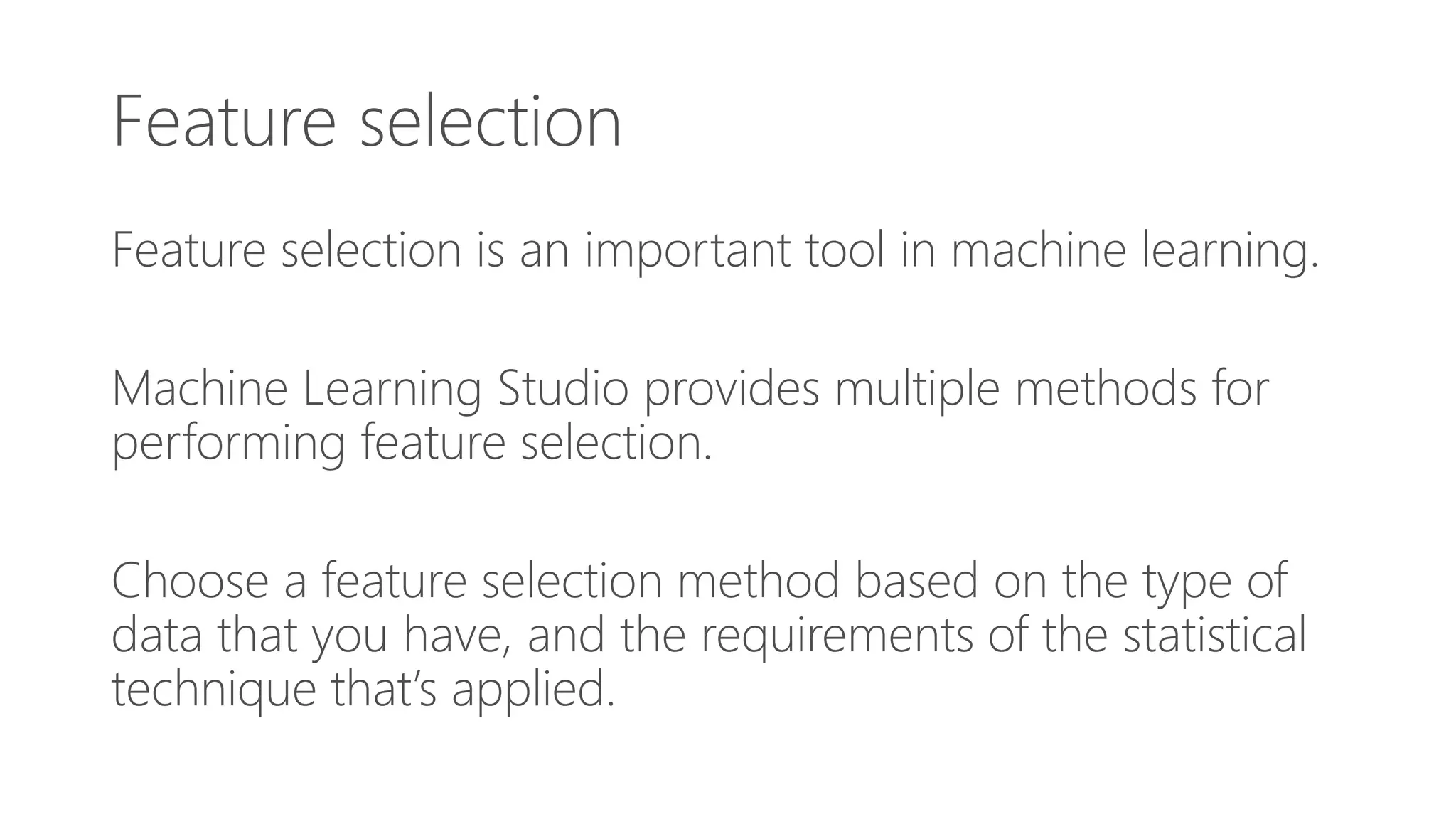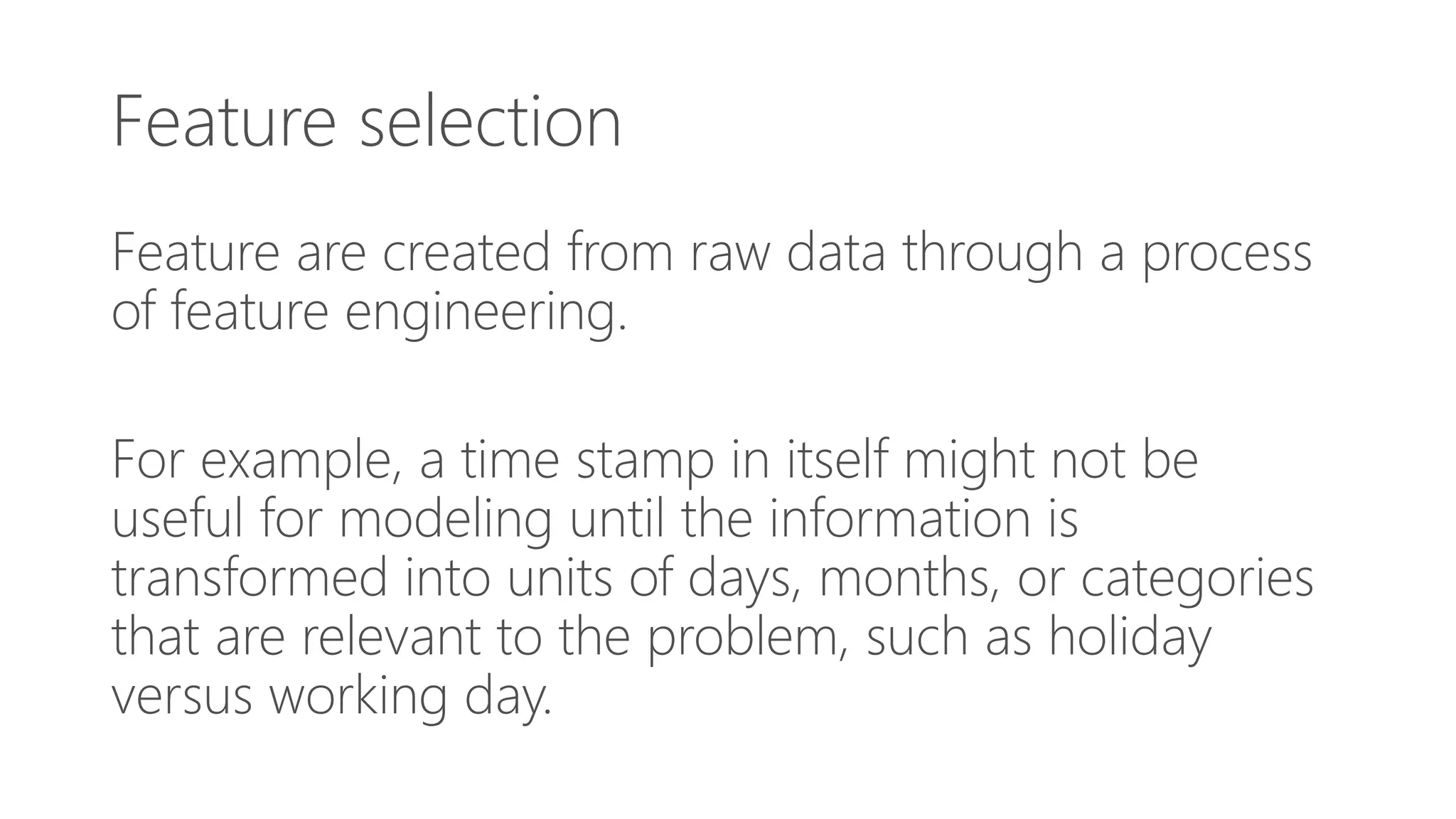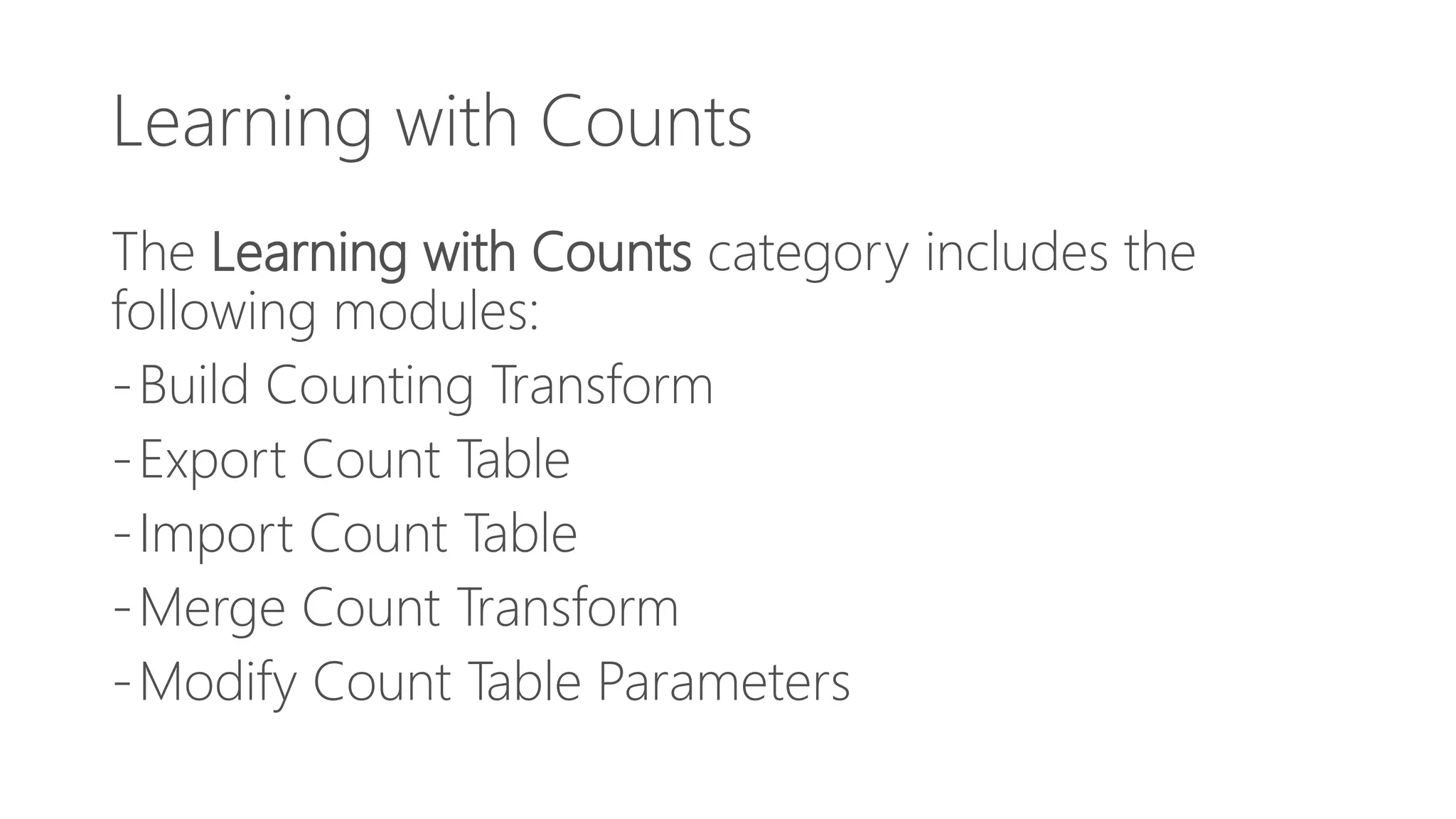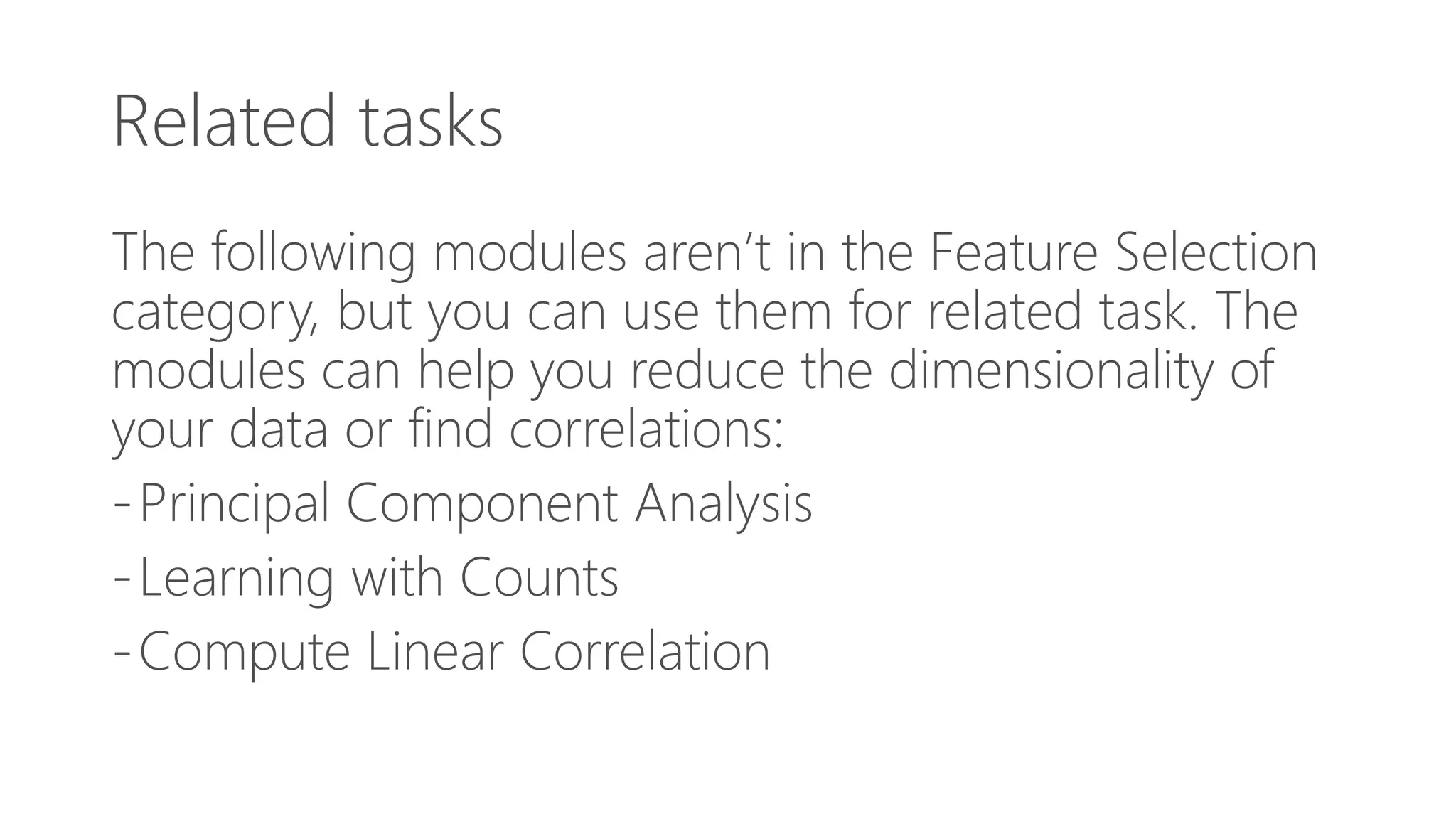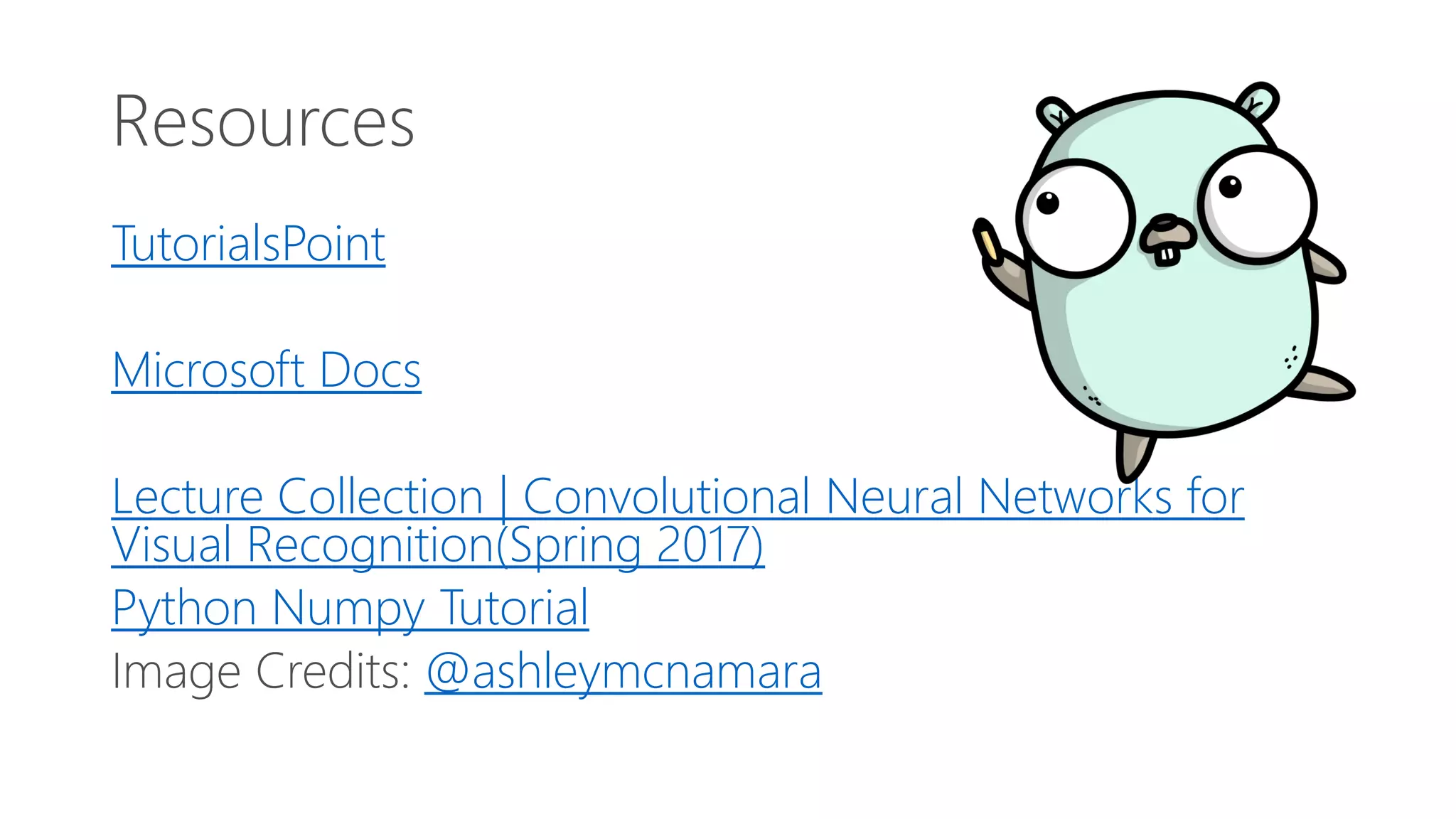The document discusses feature engineering and feature selection as critical steps in the machine learning process to enhance the predictive power of algorithms. Feature engineering creates new relevant features from raw data, while feature selection reduces dimensionality by selecting essential subsets of original features. It provides an overview of methods available in machine learning studio for both feature creation and selection, along with related tasks like principal component analysis.



